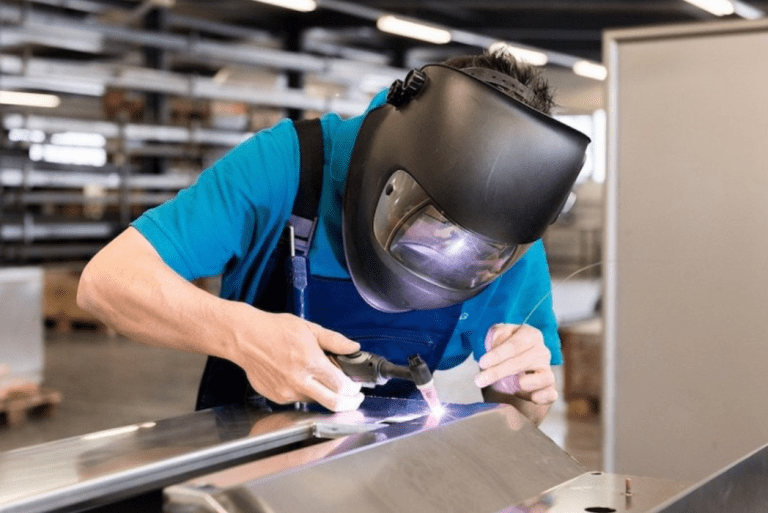Flux-cored arc welding (FCAW) is a versatile and widely used welding method that offers numerous advantages in various industries. Whether you’re a professional welder or simply have an interest in understanding the ins and outs of this technique, knowing about flux-cored welding wire and its applications is essential.
Note: “UDO Welding Company ensures that you stay ahead of the curve by providing a comprehensive platform to access the latest trends in welding wire technology on our website. As a leader in the industry, we understand the importance of staying updated and constantly improving our techniques and equipment. Our website serves as an invaluable resource, offering detailed information on cutting-edge advancements in welding wire technology. From innovative materials to enhanced performance capabilities, we present it all with a matter-of-fact tone of voice that instills confidence in our customers. With regularly updated content, including articles, videos, and product reviews from experts in the field, UDO Welding Company‘s website is your one-stop destination for keeping up with the ever-evolving world of welding.”
In this blog post, we will delve into the world of FCAW, exploring how it works, different types of flux-cored wires available, as well as its pros and cons. Furthermore, we’ll highlight some key applications where FCAW shines bright. So grab your helmet and let’s dive into the fascinating world of flux-cored arc welding!
What Is Flux-Cored Arc Welding?
Flux-Cored Arc Welding (FCAW) Explained:
A versatile welding method using a continuously fed electrode with a flux-filled core.
Flux-Cored Arc Welding (FCAW) Explained
Flux-Cored Arc Welding (FCAW) is a versatile welding process that uses a continuously fed electrode.
How Does Flux-Cored Arc Welding (FCAW) Work?
Flux-Cored Arc Welding (FCAW) works by using a continuously fed electrode with flux to shield the arc and create a strong weld.
Types of Flux-Cored Welding Wire
Ferric Core, Argon Core, and Copper Core. Each has unique applications.
Ferric (Fe) Core Wire
Ideal for welding high-strength steels in heavy-duty applications. Offers excellent crack resistance and mechanical properties.
Argon (Ar) Core Wire
Argon (Ar) core wire is a type of flux-cored welding wire used for specific applications.
Copper (Cu) Core Wire
A Versatile Option for Flux-Cored Arc Welding.
Advantages of Flux-Cored Arc Welding
Cost & energy savings, ability to weld rusted materials, and portability are advantages of flux-cored arc welding.
Cost & Energy Savings
One of the Major Advantages of Flux-Cored Arc Welding
Ability to Weld Rusty Materials
One of the advantages of flux-cored arc welding is its ability to weld rusty materials.
Portability
Easily take your flux-cored welding equipment to different job sites.
Disadvantages of Flux-Cored Arc Welding
General repairs can be challenging with flux-cored arc welding due to its limited precision.
General Repairs
Flux-cored arc welding is not ideal for delicate or precise general repairs.
What Is the Best All-Around Flux Cored Arc Welding Wire?
Best All-Around Flux Cored Arc Welding Wire: Factors to Consider
Applications of Flux-Cored Arc Welding
Flux-cored arc welding (FCAW) is a versatile welding method with various applications.
Pipelines
Pipelines are a common application for flux-cored arc welding due to its versatility and strength.
Manufacturing
Flux-cored arc welding is widely used in the manufacturing industry for its versatility and reliability.
Shipbuilding
Shipbuilding is a prominent industry that utilizes flux-cored welding wire for construction and repairs.
Underwater Welding
Underwater welding is a specialized application of flux-cored arc welding used for underwater repairs and construction.
Differences Between Flux-Cored Arc Welding and Other Welding Methods
Differences Between Flux-Cored Arc Welding and Other Welding Methods
Differences Between FCAW and GMAW (MIG/MAG)
FCAW is a versatile process, while GMAW offers high precision.
FCAW vs. SMAW
Differences Between Flux-Cored Arc Welding and Shielded Metal Arc Welding Methods.
Conclusion
Flux-cored arc welding (FCAW) is a versatile and efficient welding method that offers numerous advantages over other types of welding. With its ability to weld rusty materials, cost and energy savings, and portability, FCAW has become increasingly popular in various industries.
There are different types of flux-cored welding wires available, including ferric core wire, argon core wire, and copper core wire. Each type has its own specific applications and benefits depending on the project requirements.
FCAW finds extensive applications in industries such as pipelines, manufacturing, shipbuilding, and even underwater welding. Its unique characteristics make it suitable for both heavy-duty industrial projects as well as general repairs.
While there are some disadvantages to consider with FCAW like the need for proper ventilation due to fumes generated during the process or limitations when working on thinner metals compared to other methods like GMAW or SMAW. Nonetheless, the choice of using flux-cored arc welding ultimately depends on the specific project requirements.
To ensure high-quality welds with FCAW, follow these tips: clean surfaces thoroughly before welding; select appropriate voltage settings and electrode positions; maintain a consistent travel speed; use proper shielding gas if required; monitor weld parameters carefully; inspect completed welds regularly; perform necessary post-weld treatments such as grinding or cleaning.
In conclusion
Flux-cored arc welding (FCAW) offers a range of benefits that make it an attractive option for many professionals across various industries. Whether you’re working on pipelines or performing general repairs, having knowledge about flux-cored wires can help you achieve strong and reliable welds efficiently.
Remembering these key points will enable you to make informed decisions when choosing your equipment and ensure the success of your next project!


